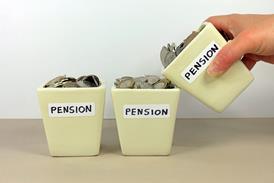Ineos has put its pension funds under consultation until mid-December to dampen the impact on its balance sheet, as part of an agreement to keep the Grangemouth plant running.
Ineos was at the centre of the Grangemouth dispute last month, in which the company threatened to close the plant after a battle with trade union Unite over proposed cuts to pay and pensions. As a result, Unite agreed to the company’s survival plan in order to secure the future of the plant and its workers.
Ineos' pensions structure
Ineos inherited a fully funded final salary scheme – the Innovene Pension Plan – when it acquired BP’s chemicals business in 2006.
IPP:
A 2 per cent employee contribution for 1/60ths accrual
Special benefit that allows employees aged 55 with 30 years’ service to retire with an unreduced pension
Ineos Chemicals Pension Plan - the GPP:
A standard employee/employer contribution rate of 6 and 9 per cent respectively
An enhanced rate of 6 and 11 per cent
The pensions consultation will also look at closing the final salary plan to future accrual and moving staff to the group personal pension at a contribution rate to be decided.
“The combination of the deficit recovery payments and the future service contributions has now ramped up to 65 per cent [of salary]," said HR director Ian Fyfe. "So that is why we’re proposing that the plans close to future accrual to everybody at the end of this year, and we move into the [GPP] for future service for everybody.”
Managing the deficit
At the last valuation, the final salary scheme deficit stood at £174m and three years prior it was £86m.
“You can see the direction of travel,” said Fyfe. “There’s a lot of things that contribute to that; increased longevity, the difficulties in the world markets, increased regulation.”
Richard Butcher, managing director at independent trustee company PTL, said schemes should not lose sight of the longer-term journey but that the “sensible trustee will take bets” to minimise the impact of macroeconomic effects.
“If you’re going for broke, and provided the employer covenant is strong enough to withstand any further shock, you might invest more in growth assets,” he added, but warned that schemes should not overexpose themselves to any single area.
The Innovene Pension Plan has a trustee board of seven – comprising member-nominated, company-nominated and independent directors – who have looked to diversify the scheme’s investments over the past couple of years.
“It was pretty solidly equities and bonds previously, and there’s been a lot more [effort] in being more imaginative [by] the trustees to get the best possible returns,” Fyfe said. “For instance, long-lease property is one arena that the trustees are now investing in.”
John Belgrove, senior partner at Aon Hewitt, said the “toxic mix” of a low interest rate environment, longevity and moderate asset returns have opened up substantial deficits over the past decade.
“For many years I've used a cheesy phrase, that the better trustees see the problem with 3D vision,” Belgrove said. ”That is to say they a) derisk, b) diversify and c) act dynamically."
He added: "Schemes that derisked heavily in 2006 are much better off today than those that didn't [and] schemes that were more nimble may have taken advantage of market dislocations during the credit crisis.”






















